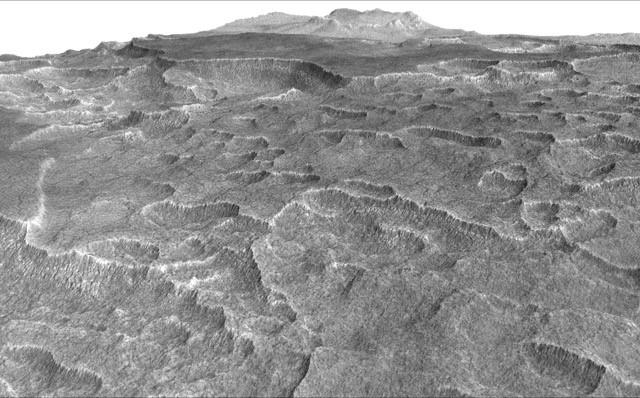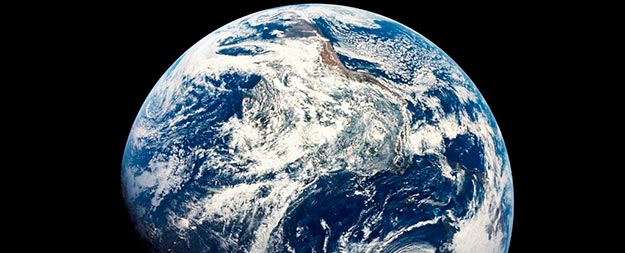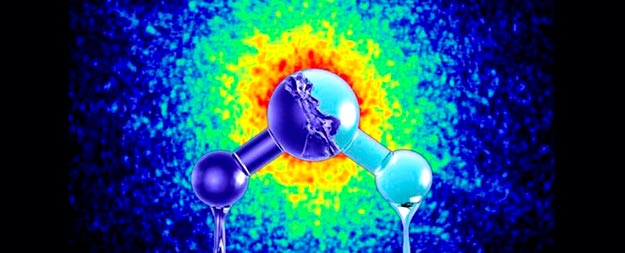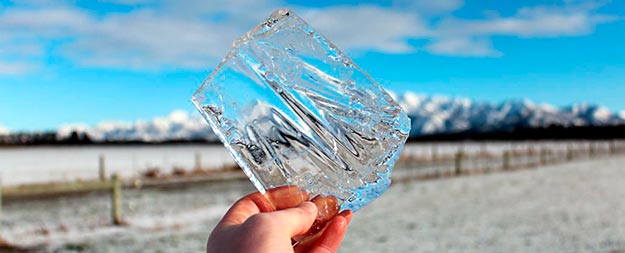Frozen beneath a region of cracked and pitted plains on Mars lies about as much water as what’s in Lake Superior, largest of the Great Lakes, a team of scientists led by The University of Texas at Austin has determined using data from NASA’s Mars Reconnaissance Orbiter.

This vertically exaggerated view shows scalloped depressions in a part of Mars where such textures prompted researchers to check for buried ice, using ground-penetrating radar aboard NASA’s Mars Reconnaissance Orbiter. They found about as much frozen water as the volume of Lake Superior.
Scientists examined part of Mars’ Utopia Planitia region, in the mid-northern latitudes, with the orbiter’s ground-penetrating Shallow Radar (SHARAD) instrument. Analyses of data from more than 600 overhead passes revealed a deposit more extensive in area than the state of New Mexico. The deposit ranges in thickness from about 260 feet to about 560 feet, with a composition that’s 50 to 85 percent water ice, mixed with dust or larger rocky particles. Read more











